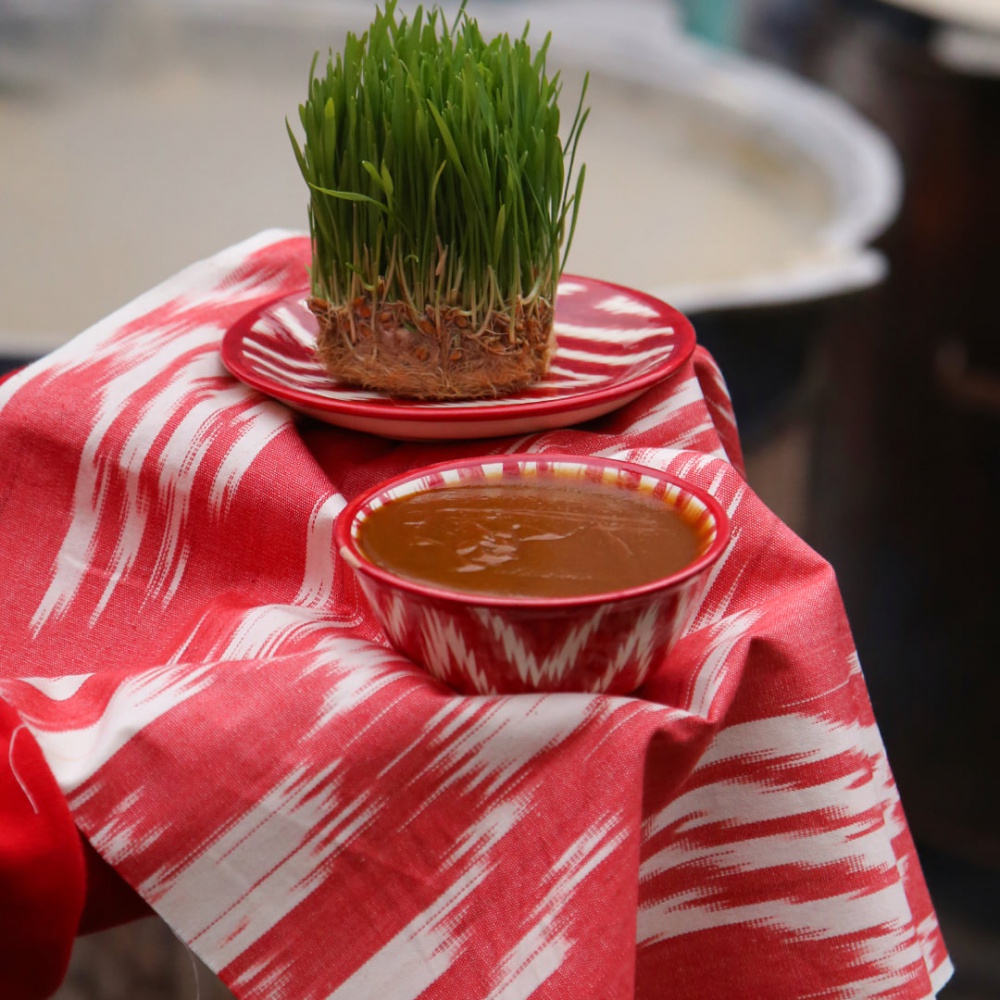ORIGIN OF THE NAVRUZ HOLIDAY
The appearance of "black-eared" flower with tender stems under the rays of tender spring caressing sun is a proof of the arrival of spring in Tajikistan. This is an undeniable proof of the arrival of the main spring holiday – Navruz.
"Navruz" means "new day" in translation. It is the name of the holiday of spring, the vernal equinox, a widespread holiday of Persian-speaking peoples - Iranians, Tajiks, Afghans. The roots of this holiday go far back in history, 3000 years before our century. The history of Navruz, shown in "Navruznoma" by Omar Khayyam, goes back to the ancestor. In Abulqosim Firdavsi's "Shohnoma", the origin of this holiday is attributed to the legendary king Jamshed. March 21 is the day of equinox and the length of day and night will be the same - 12 hours. When Jamshed made a throne of pure gold (according to legend it was the first throne in the history of mankind) and took it to the top of the mountain at sunrise, the gold shone from the sun's rays. And this day was called Navruz, celebrated as the beginning of a new year. Navruznoma says this, "When Jamshed realized this day, he called it Navruz and turned this festival into a tradition. Other kings followed him."
As noted in literary and historical sources, the celebration of Navruz during the reign of the Samanids was accompanied by fanfare. Leading poets such as Rudaki, Firdavsi, and Daqiqi spoke fondly of Navruz, depicting in words a beautiful picture of spring.
Sumanak is considered to be the symbol of Navruz. About a week before the holiday, wheat grains are soaked in a shallow container. On the eve of the holiday the wheat begins to sprout. There is a belief that the longer the wheat is young, the more abundant will be the harvest in the new year. Young wheat is pounded in an iron sieve, then put a cauldron, add water, pour flour and cook for 10-12 hours, while constantly stirring and shaking.
The festive table is decorated with cakes, sweets, fruits. A traditional ritual in Navruz is to make seven "sin"-s and "shin"-s (letters "s" and "sh" of the Persian alphabet) - treats, plants, etc., the first letters of which begin with "s" and "sh". Traditionally, the center of a large dastarkhan is decorated with sumanak.
In the cities on this day everyone gathers in the main square to see the festive show.
The holiday Navruz was included by the United Nations on September 30, 2009 in the Representative Register of the Spiritual and Cultural Heritage of Humanity, referring to the outcome document of the 2005 World Summit, which was adopted by the General Assembly at a high level. As is known, at the initiative of the countries of the Navruz area, on March 21, 2010, the United Nations adopted a Resolution on declaring Navruz an International Holiday. It should be noted that the recognition of Navruz as an International Holiday by the United Nations shows that the people of the world honor this truly cultural and humanistic holiday as a symbol of the beauty and awakening of nature.
It should be emphasized that Navruz has been celebrated as the beginning of the new year all over the world - in the Balkans, the Black Sea region, the Caucasus and Central Asia - for 3,000 years.
Translated Ismoilov R.

